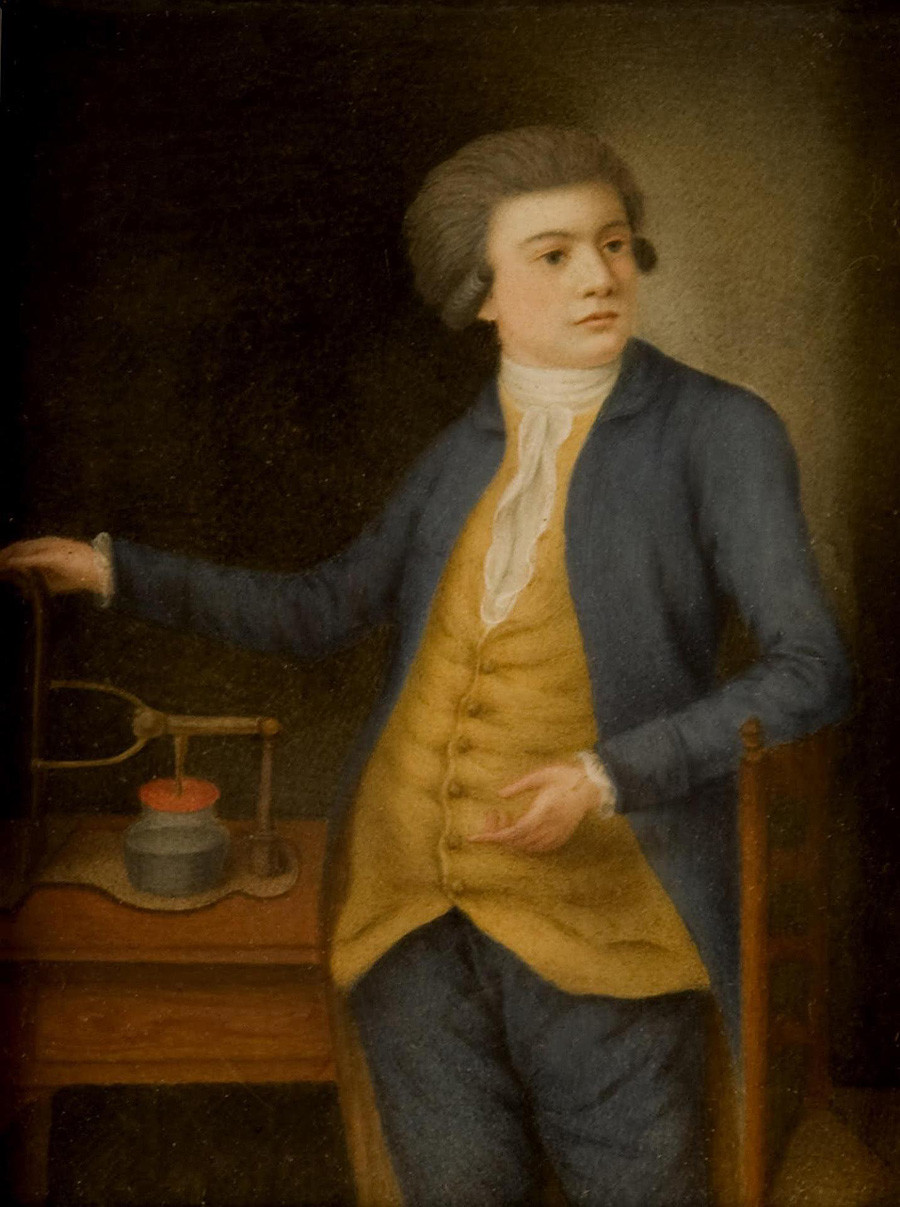Vasily Vladimirovich Petrov

Vasily Vladimirovich Petrov (Russian: Василий Владимирович Петров) (19 July [O.S. 8 July] 1761—1834) was a Russian experimental physicist, self-taught electrical technician, academician of Russian Academy of Sciences (since 1809; Corresponding member since 1802).
Vasily Petrov was born in the town of Oboyan (currently Kursk Oblast of Russia) in the family of a priest. He studied at a public school in Kharkov, and then at the St. Petersburg Teacher's College.
In 1788, he gained a position as mathematics and physics teacher at Kolyvansko-Voskresenskoe College of Mining, in the town of Barnaul. In 1791, he was transferred to Saint Petersburg to teach mathematics and Russian at the military Engineering College, in the Izmailovsky regiment. In 1793, Petrov was invited to teach mathematics and physics at the St. Petersburg Medical and Surgery School, at the military hospital. In 1795, he was promoted to the rank of 'Extraordinary Professor'. During the next few years, he built up a comprehensive physics laboratory.
His first published book, "A collection of new physical-chemical experiments and observations" (Russian: Собрание физико-химических новых опытов и наблюдений), was published in 1801. The bulk of this work was dedicated to the description of experiments related to combustion, as evidence against the then-popular phlogiston theory.
The chapters, describing luminosity of phosphors of mineral and organic origins have elicited vivid interest in scientific circles. Petrov was able to detect the maximum temperature when phosphorus ceases to glow in open (atmospheric) air, by his numerous experiments with fluorite he was able to prove it glows due to a different reason than phosphorus.

In 1802, Petrov discovered the electric arc effect, thanks to his building the world's largest and most powerful Voltaic pile at the time, which consisted of around 4200 copper and zinc discs.[1] In his work published in 1803 Petrov proposed the usage of electric arc in welding, having managed to perform a simple experimental welding.[2] But it was not until the 1880s that the technology became developed with the aim of industrial usage. At first, carbon electrodes invented by Nikolay Benardos were used,[3] and by the late 1880s, metal electrodes were invented by Nikolay Slavyanov.[4]
References
- ^ Shea, William R., ed. (1983). Nature mathematized: historical and philosophical case studies in classical modern natural philosophy. Dordrecht: Reidel. p. 282. ISBN 978-90-277-1402-2.
- ^ Petrov Vasily Vladimirovich at weldworld.ru Template:Ru icon[self-published source?]
- ^ Benardos Nikolay Nikolayevich at weldworld.ru Template:Ru icon[self-published source?]
- ^ Slavyanov Nikolay Gavrilovich at weldworld.ru Template:Ru icon[self-published source?]
Further reading
- Menschutkin, Boris N. (1936). "Vasilij Vladimirovic Petrov and His Physico-Chemical Work". Isis. 25 (2): 391. doi:10.1086/347088.
- Vernadsky, George (1969). "Rise of Science in Russia 1700-1917". Russian Review. 28 (1). Blackwell Publishing: 37–52. doi:10.2307/126984. JSTOR 126984.
{{cite journal}}: Unknown parameter|month=ignored (help)
